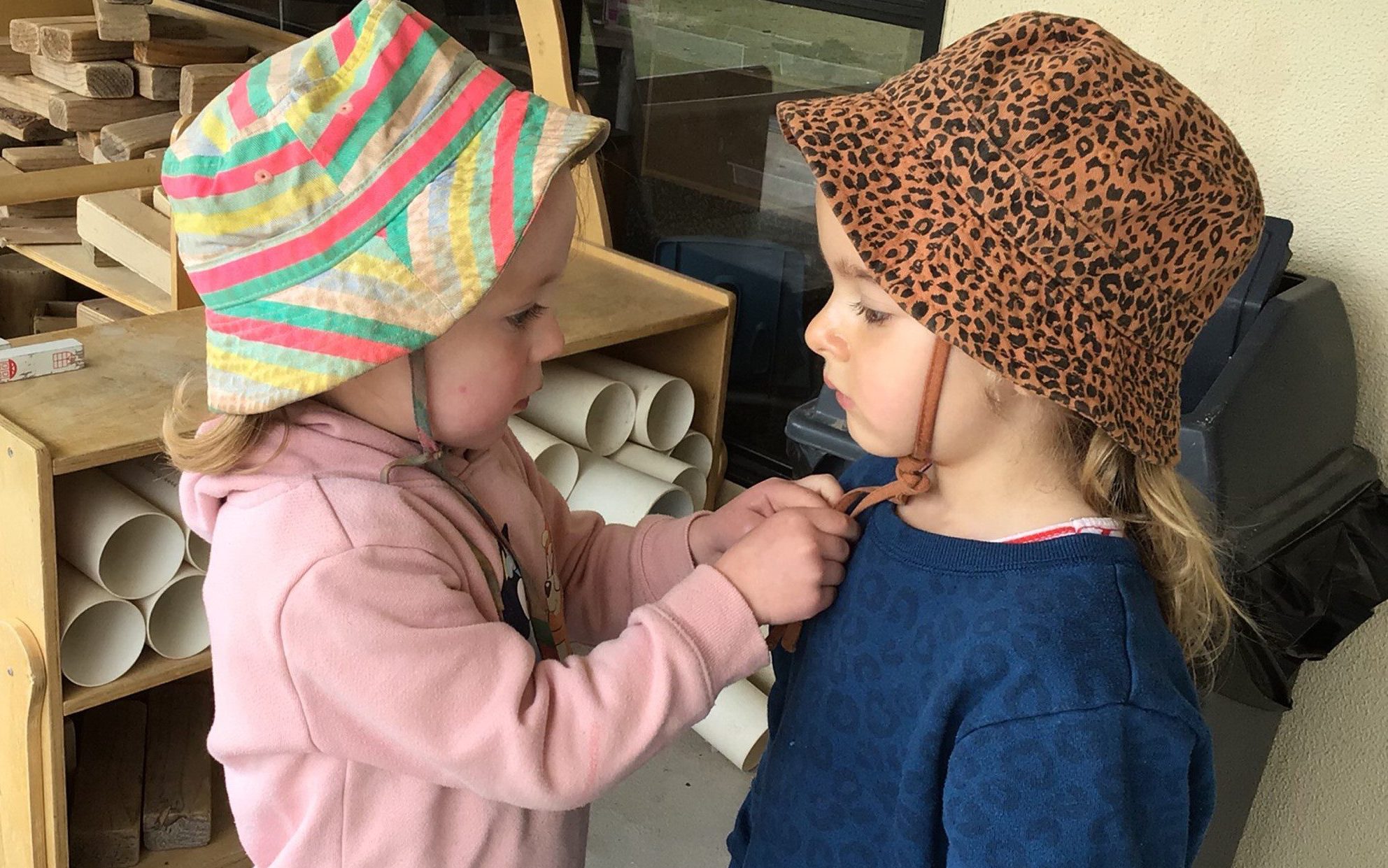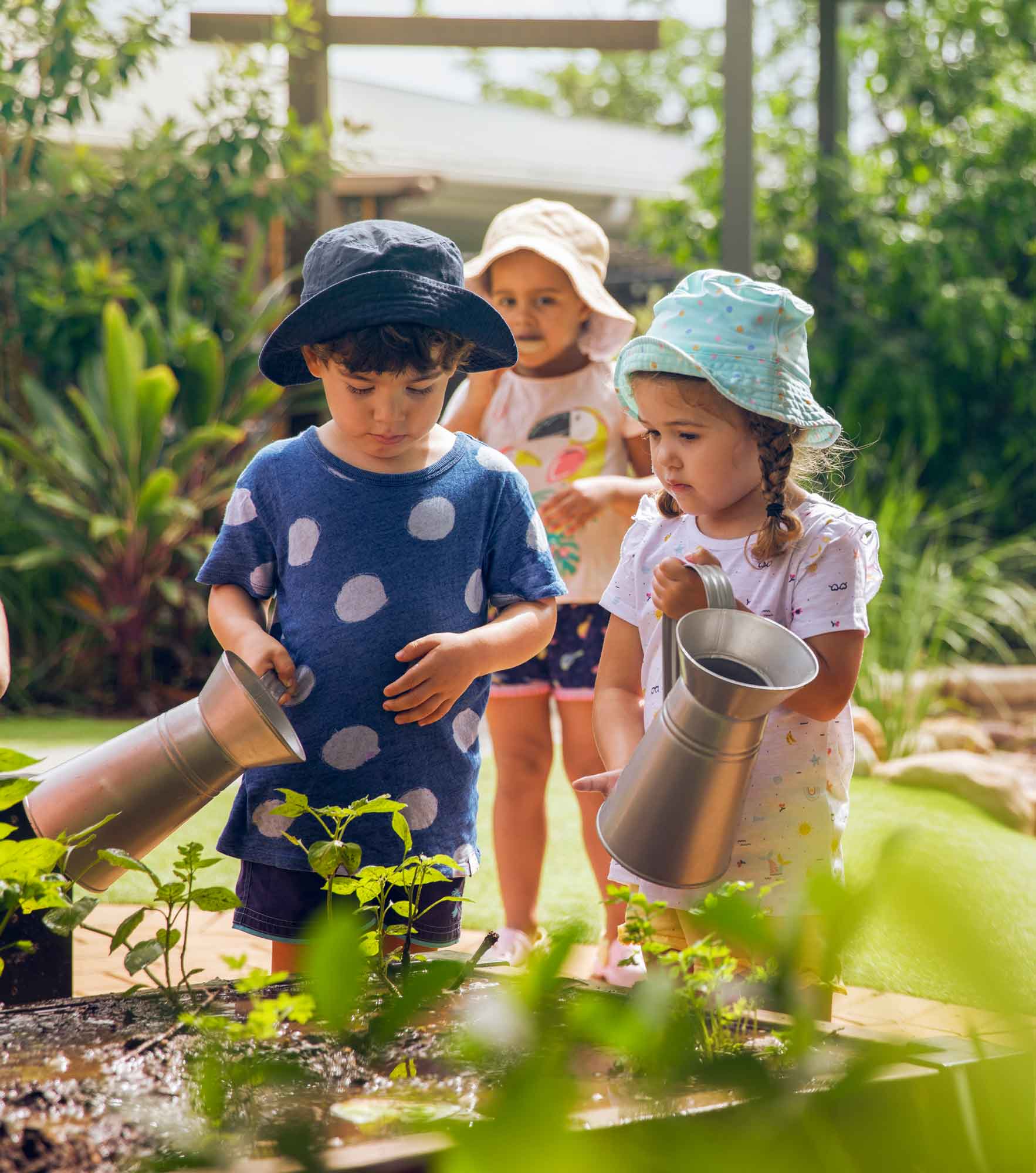Early Learning Advice
Outdoor Summer Safety Checklist For Children
Slip, Slop, Slap, Seek & Slide – Summer has arrived!
Whether your children are home for summer, on the road with you or away at camp, use these summer safety tips to keep your family safe and healthy.
Fun in the Sun
- Protect your child from too much sun. The sun’s rays are strongest between 10 a.m. and 4 p.m., so be extra careful during that time.
- Whenever your child is outside, use sunscreen with a sun protection factor (SPF) of at least 15. Choose one that protects against UVA and UVB rays.
- Apply sunscreen 30 minutes before going outside. Reapply every 2 hours and after being in the water or sweating.
- Keep children under 1 out of the sun as much as you can. Dress your baby in lightweight, light-coloured clothing with long sleeves and long pants. Always cover their head. Children under 6 months of age can have small amounts of sunscreen put on their faces and the backs of their hands, but be careful not to get it in their eyes or mouth.
- Most of the sun’s burning rays go right through clouds, so use sunscreen even on cloudy days.
- Select sunglasses for babies and children that provide 100% UV protection.
- When it is 32° or above and humid, children should not play outside or exercise for more than 30 minutes at a time.
- Make sure your child drinks plenty of fluids even if they are not thirsty. Water is best.
- Take breaks to cool off in the shade.


Water Safety
- Never leave children alone in or near the water, even for a minute. Actively watch children when they are in and around water. Have adults take turns being “child watchers” at family events.
- Young children need to wear life jackets when playing in or near water and while on docks. Children, teens and adults should wear life jackets for boating and while swimming in lakes, rivers or the ocean.
- Bring life jackets with you on outings and vacations. Make sure they fit and are comfortable.
- Teach your children to swim. Be aware of the hazards of swimming in a lake or river.
- Toys and mattresses that inflate will not keep children safe. Choose the right life jackets for your children.
- Children should swim only when lifeguards are on duty or if an experienced swimmer is watching.
- Pools need a fence that has 4 sides, is at least 4 feet high, and is self-latching and secured.
- Cover your spa when not in use. Keep long hair away from intake drains at the bottom of spas.
- If you spend time in boats, learn about boating safety. Visit boatus.org to learn more.
- Ponds, 5-gallon buckets and wading pools are drowning hazards for very young children. Empty water from buckets and wading pools, and make sure children are supervised around water.
- Learn more about summer safety tips for outdoor activities here.


Summer Safety – Riding Safe
- Always wear a helmet when riding a bike, scooter and skateboard or roller blading.
- Wear knee and elbow pads for scooter riding, and add wrist guards for roller blading or skateboarding.
- Ride a bike that fits them.
- Understand the importance of summer safety.
For family bike rides
- Children under 1 shouldn’t ride as passengers on adult bikes.
- Children ages 1 to 4 (or less than 40 pounds) should ride belted and wearing a helmet. They ride best in a carrier seat mounted on the bike or in a bike trailer.
- Children follow your lead, so always wear a helmet when you ride!

Summer Safety – Playgrounds
- Watch children while they play at the playground.
- Keep children away from the front and back of swings while in use.
- Make sure metal slides are cool to prevent burns.
- Check play equipment for exposed bolt heads, sharp edges and places where fingers can get pinched. Cover these with rubber.
- Place new play equipment over wood chips, sand or another soft surface.
- Avoid riding double on swings and slides.
- Teach children to take turns and not push or roughhouse on play structures.
Summer Safety – Bites and Stings
- Teach your child to never surprise or scare a dog and never approach a dog they don’t know.
- Check eaves and under decks for bee or wasp nests. Teach children not to touch or throw things at nests.
- Avoid using insect repellent on babies younger than 2 months.
- Use repellent that contains no more than 30% DEET.
- Use repellent on the outside of clothing and on exposed skin. Avoid putting it on cuts. Do not spray repellent on your child’s face. Instead, spray a little in your hand and rub it on their face. Be careful to avoid their eyes and mouth.
- Avoid dressing your child in brightly-coloured and floral print clothing.
- Avoid using scented soaps, perfumes and hair products.
Summer Safety – Ticks
To protect against ticks, especially when playing or hiking in woods or fields with long grass:
- Have children wear long-sleeved shirts and pants.
- Tuck clothing into pants and pant cuffs into socks.
- At the end of the day, check your child’s whole body for ticks.



